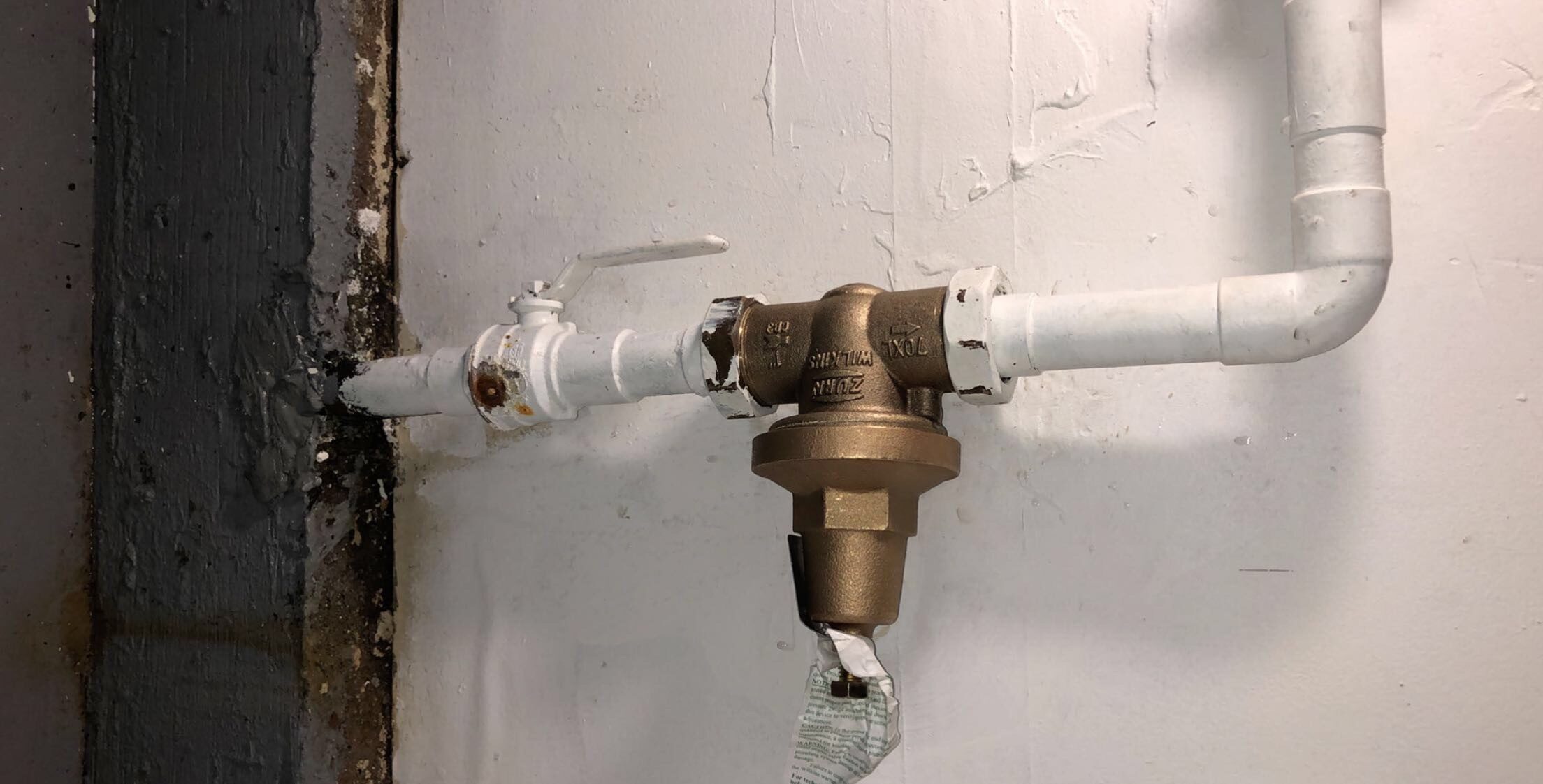High water pressure may feel luxurious—strong showers and rapid fills—but without regulation, it can damage plumbing fixtures, waste water, and even burst pipes. That’s where a water pressure regulator (also called a pressure reducing valve, or PRV) comes in. Installed on your main supply line, it ensures a steady, safe pressure throughout your home. Below, Damman’s Plumbing explains how these devices work, why they’re essential, and how to choose, install, and maintain the right regulator for your system.

How Water Pressure Regulators Work
A water pressure regulator uses a spring-loaded diaphragm to balance incoming municipal pressure (often 80–120 psi) down to a preset level (typically 50–60 psi). When water flows, the diaphragm moves, opening or closing the valve to maintain that target pressure. If inlet pressure spikes, the PRV clamps down; if inlet pressure dips, it relaxes to supply sufficient flow. This dynamic control protects downstream pipes, appliances, and faucets from the stress of excessive pressure.
Why Proper Pressure Matters
Fixture Longevity: High pressure accelerates wear on faucet cartridges, washer hoses, and toilet fill valves. Over time, seals fail and leaks develop.
Pipe Integrity: Excessive pressure can cause pinhole leaks in copper or stressed joints in PEX and PVC piping.
Water Conservation: A regulated flow avoids overuse—showering at 60 psi instead of 100 psi can reduce consumption by 20%.
Appliance Protection: Dishwashers, water heaters, and ice makers perform best within manufacturer-specified pressure ranges. Out-of-bounds pressure often voids warranties.
Identifying Pressure Problems
Hammering or Banging Pipes (Water Hammer): Sudden stops at high pressure create shock waves through rigid plumbing.
Dripping Faucet or Toilet Constantly Refilling: Even when off, high inlet pressure forces water through worn seals.
Spitting or Sputtering Fixtures: Pressure fluctuations can introduce air into lines, causing erratic flow.
Unusually Fast Water Usage: Check your water meter when no one’s using water; a rising meter under high pressure may indicate hidden leaks.
Selecting the Right Regulator
When choosing a PRV, consider:
Inlet Pressure Rating: Ensure the regulator can handle your maximum municipal pressure (some cities exceed 120 psi).
Outlet Adjustment Range: Most models allow 20–80 psi settings; pick one that covers your desired 50–60 psi.
Flow Capacity (Cv Rating): For large homes or irrigation systems, select a regulator with higher flow capacity to avoid pressure drop during heavy use.
Material & Certification: Lead-free brass bodies (compliant with NSF 61) and stainless-steel springs resist corrosion and meet health standards.
Professional Installation & Calibration
Installing a water pressure regulator involves:
Shutting Off the Main: Depressurize the system before cutting the supply line.
Choosing Location: Place the PRV just after the main shutoff and before any branch lines or water heater for comprehensive protection.
Proper Orientation: Install with the arrow on the body pointing in the direction of water flow.
Pressure Gauges: Fit inlet and outlet gauges to verify performance under load.
Adjustment: After water is restored, turn the adjustment screw slowly while monitoring the outlet gauge to your target pressure.
Professional calibration ensures stable readings under all flow conditions and avoids downstream “creep” (gradual pressure rise over time).
Maintenance & When to Replace
Pressure regulators rarely fail, but they do require periodic attention:
Annual Check: Monitor outlet pressure and inspect for leaks.
Filter Screen Cleaning: Some PRVs include a debris screen—flush it to prevent sticking.
Replacement Interval: Manufacturers recommend replacing regulators every 10 years or when outlet pressure can no longer be maintained, even at the lowest adjustment setting.
Frequently Asked Questions (FAQs)
Q: Can I install a pressure regulator myself?
A: While skilled DIYers can install a PRV, professional plumbers ensure correct sizing, leak-free connections, and precise calibration under load.
Q: What happens if I don’t have a regulator?
A: Your plumbing system is at risk of accelerated wear, leaks, and potential burst pipes—especially during pressure spikes in the municipal supply.
Q: My regulator squeals—what causes that?
A: A high-pitched vibration often indicates a worn spring or diaphragm. Cleaning debris or replacing the unit is usually necessary.
Q: Should I combine a regulator with a water hammer arrester?
A: Yes. Installing a PRV can change system dynamics; pairing it with arresters prevents water hammer caused by sudden valve closures.
Q: Does a pressure regulator affect water temperature?
A: Only indirectly. By stabilizing flow, a PRV helps maintain consistent mix in tankless or conventional water heaters, avoiding “hot” or “cold” surges.
Conclusion
A properly selected and maintained water pressure regulator is a silent guardian of your home’s plumbing health—extending fixture life, conserving water, and preventing costly damage. Damman’s Plumbing brings EEAT-backed expertise to every installation, from accurate site assessment to dialed-in calibration and ongoing service. Protect your home with the right regulator today.
Contact Damman’s Plumbing:
Phone: (619) 504-3745
Email: [email protected]
- Website: www.dammansplumbing.com
